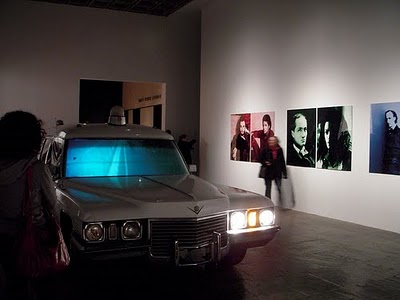 |
|
| Stills from video “I will not make any more boring art”, in which Baldessari writes that phrase repetetively |
“John Baldessari, the 79-year-old conceptualist, has spent more than four decades making laconic, ironic conceptual art-about-art, both good and bad. His style is familiar and recognizable, wry and dry: It usually incorporates a photo or grid of pictures, often black-and-white and grainy, with the vibe of a seventies issue of Artforum; text of some kind; a found object placed casually; a video or maybe a newspaper clipping or some other element taken from popular culture. The approach is hugely influential, setting the precedent for interesting artists like Cindy Sherman and David Salle. In a sense, Baldessari imagined a large circular room with a hundred entrances and exits. Thousands of artists could go through, and did. After a visit to the Metropolitan Museum of Art’s retrospective, you’ll see that Baldessari’s children have overrun Chelsea.
And that’s the problem. Even a former student like Salle admits that “at least three generations of artists” doing “dumb stuff … is largely John’s fault.” Baldessari’s interesting niche bewitched too many people, creating a hackneyed academy of smarty-pants work that addresses the same issues in the same ways, over and over, just the way Baldessari and others of his generation did 40 years ago.”
 |
| Tips for Artists Who Want to Sell, John Baldessari |



